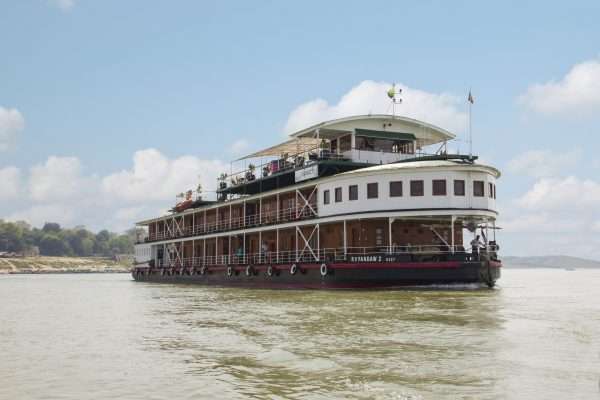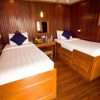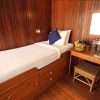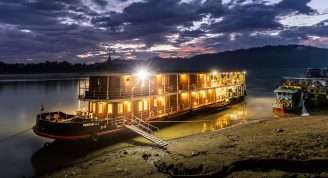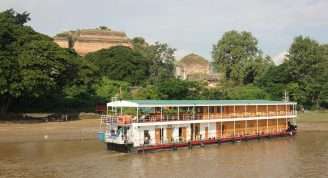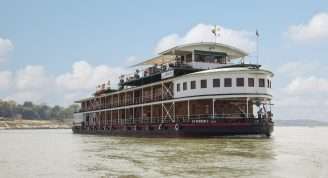Description
A fabulous way to discover the mighty Irrawaddy River aboard a Pandaw with up to two weekly departures between the historic royal capitals with two nights moored at Pagan and three at Mandalay as well as exploring small towns and villages of lost Burma in between. Exceptional value for money with no single supplement on many selected departures!
Trip Name
Mandalay Pagan Packet (Downstream)
Days
8
Overview
Vessel Type: River Boat
Length: 60 metres
Passenger Capacity: 48
Built / refurbished: 2002
Pandaw II was our first ever new build back in 2001. Though our oldest ship she is still young in river terms – her prototype the old Pandaw is now over sixty years old and many ships in this fresh water environment are at least 100 years old. She was built in Rangoon at the Dawbone dockyard, then belonging to the Marine Department. In those days there was no electricity and numerous generators surrounded the growing hull powering the welder’s torches. Timber mills were rare too and great tree trunks would be delivered to the dockside and be cut into planks on the spot. The result was magnificent and still is.
Pandaw II remains the stately queen of our fleet, if not the river. This is the one ship that has not been fully refitted, partly because the crew have treated her with such love and care that she does not need a refit and partly because she is something of a cult ship with a considerable following and we want to preserve the original Pandaw cabin with their real ship’s berths and the old door and window arrangement rather than the French windows of our other P class ships.
The ship has quality mountain bikes for your independent exploration.
ACCOMMODATION
• 16 upper deck, 8 main deck staterooms • 170 square feet, finished in teak and brass • Kimonos and slippers • Spa-branded amenities • Unlimited mineral water • Electric mini safe • Central AC with individual control • Imported quality linens with duvet and two kind of pillows • Premium mattresses • Welcome flower arrangement and welcome gift • Mirror • Multi-configuration plugs • Generous closet space and under-bed storage • Hair dryer • Daily nightly turndown service • 24h laundry service • Complimentary evening canapés
WINING & DINING
• Local master chef heading an experienced international culinary team • Semi-buffet breakfast, Semi-buffet lunch, and seated theme dinners • Daily lean & light menu options • Complimentary coffee, water, tea, soft drinks, local beer, local spirits, juices • Extensive wine list with premium wines • Series of cultural performances, educational talks, cooking classes, and ship tour • Welcome drink on arrival • Welcome cocktail • Farewell Reception • Theme dinners • Spacious, air-conditioned saloon bar with nightly entertainment • Sundeck bar • 24hrs hospitality bar • Onboard bakery with daily freshly baked breads and rolls
ON EXCURSIONS
• Admissions • Shoe cleaning after excursions • Bottled drinking water • Cold towel service after excursions • Refreshing drink following excursions • Maximum 24 guests per guide on all excursions • Full-size motor coach on all excursions (maximum of 24 passengers per coach) • 1st aid trained assistant guide to follow all tours and excursions
SAFETY & SECURITY
• All onboard crew is trained and certified as per international marine standards • Fire alarm system in all cabins, public areas and back areas • Fire fighting system in all ship areas • Expert marine superintendant • 24 hrs watch on duty
ONBOARD STAFF
• Captain • River Pilot • First Officer • Chief Engineer • 1st Engineer • Electrician • Bosun & nautical crew • Ship manager • Housekeeping • Dining • Bar keeper • Chefs • Local tour guides
PUBLIC SPACES
• Guest relation desk • Fair-trade Shop • Library with contemporary and classic literature


